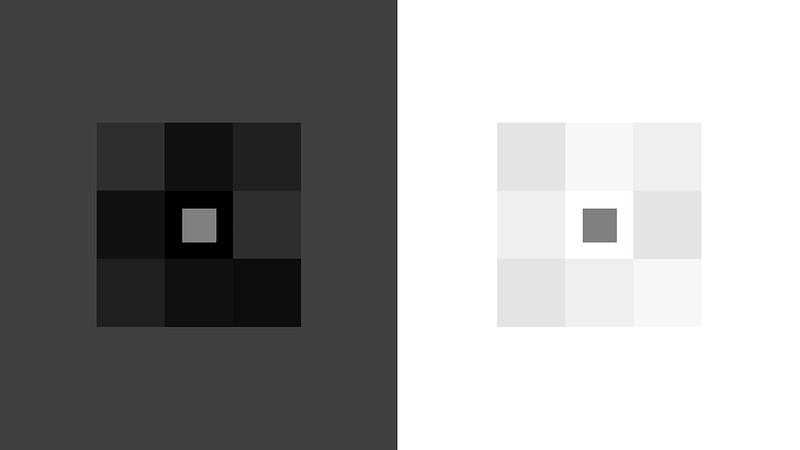Value Relationships
When drawing, focus on value relationships rather than isolated values. Surrounding values affect how we perceive a particular value.
For example, two identical squares can appear different due to their surroundings. One seems lighter, the other darker, but they're the same value. This shows how context influences perception.
Optical Illusions and Perception
The checkerboard illusion demonstrates this effect. Square A looks darker than square B, but they're identical in value. This occurs because our brain considers local value plus lighting conditions. A white square in shadow can match the value of a black square in light.
Our brains have expectations that trick our perception. We assume a white square is always lighter than a black one. Even when aware of the illusion, it's hard to see the true values.
Override your brain's automatic labeling. Instead of thinking, "This is a white square, so it's white," focus on the actual values resulting from local value and lighting.
A common mistake is making the white of the eye literally white, which looks unnatural. Remember, the eye is a 3D form, and its value depends on the light's angle.
Avoiding Tunnel Vision
Tunnel vision happens when you focus too much on one area, causing value distortions. To avoid this, change your perspective:
- Flip your drawing
- Use a mirror
- Tilt your head or drawing
- Lean back and squint
Regularly step back from your work. Squinting helps you see overall value relationships and maintain correct shadow values.
Squint
Squinting simplifies the image, blurring details and grouping values. It helps identify primary and key secondary forms. Squint more during initial stages to establish major values, and less when adding details.
Digital Squinting - Photoshop's median noise removal filter can simulate squinting by simplifying values while keeping edges sharp. Use it as a training tool to improve your ability to see value groups. However, aim to develop this skill intuitively, without relying on software.
* * *
Seeing true values over assumed ones comes with practice. As you draw more, you'll train your eyes to override preconceptions and perceive values accurately. This enhances your ability to create drawings that effectively depict light, shadow, and form.
Learn more about values and other fundamentals in the premium course!





































